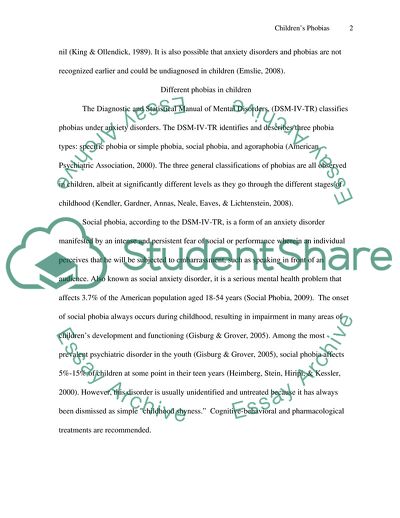Cite this document
(The Development of Children's Phobias Essay Example | Topics and Well Written Essays - 1750 words, n.d.)
The Development of Children's Phobias Essay Example | Topics and Well Written Essays - 1750 words. https://studentshare.org/psychology/1730108-reasearch-on-developing-of-phobias-in-children
The Development of Children's Phobias Essay Example | Topics and Well Written Essays - 1750 words. https://studentshare.org/psychology/1730108-reasearch-on-developing-of-phobias-in-children
(The Development of Children'S Phobias Essay Example | Topics and Well Written Essays - 1750 Words)
The Development of Children'S Phobias Essay Example | Topics and Well Written Essays - 1750 Words. https://studentshare.org/psychology/1730108-reasearch-on-developing-of-phobias-in-children.
The Development of Children'S Phobias Essay Example | Topics and Well Written Essays - 1750 Words. https://studentshare.org/psychology/1730108-reasearch-on-developing-of-phobias-in-children.
“The Development of Children'S Phobias Essay Example | Topics and Well Written Essays - 1750 Words”. https://studentshare.org/psychology/1730108-reasearch-on-developing-of-phobias-in-children.


